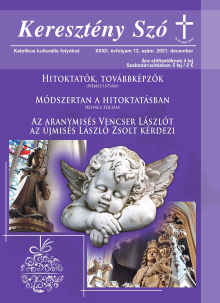
We kindly inform you that, as long as the subject affiliation of our 300.000+ articles is in progress, you might get unsufficient or no results on your third level or second level search. In this case, please broaden your search criteria.

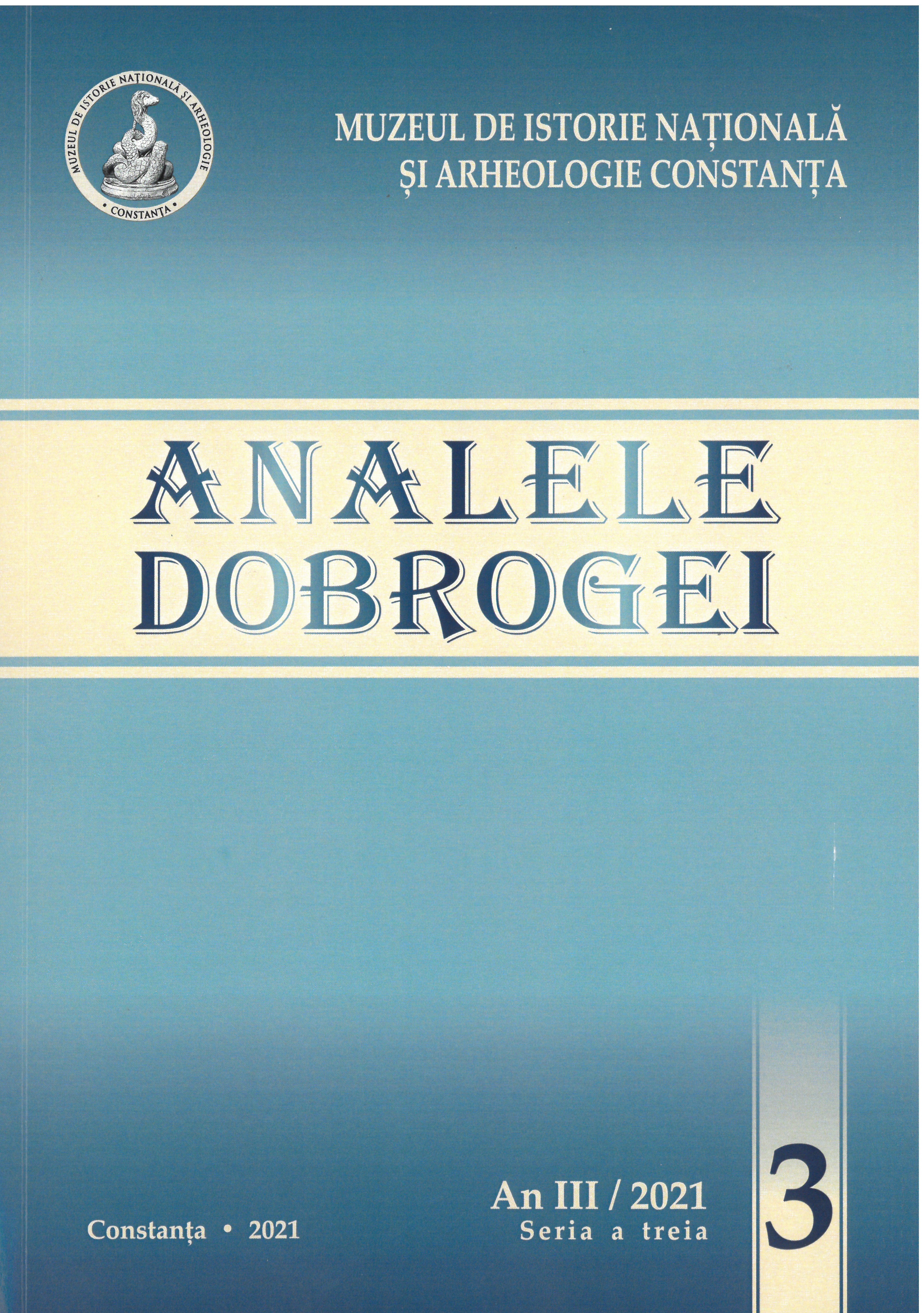
In this article we analyzed from a structural, utilitarian, and semantic point of view lestovka (prayer rope) and podrushnik (prayer rug), two identity markers important for the Starover group, used during prayer or in the context of rites of passage. We believe that only by understanding the ontogenesis of the object we can know how the objects invested with religious and spiritual values interact with believers as well as why the artifacts are able to sustain sacredness themself. Also, from the strict materiality to the symbolic dimension, from utility to inclusion in a system of meaning (ritual objects, identity markers, marketed products), lestovka and podrushnik can decode the existential meanings of the Old Believer community, but and the relationship between tradition and innovation. On the other hand, in addition to the utilitarian and symbolic roles of these objects, they function as hierotopic objects, with the help of which sacred toposes are created and maintained.
More...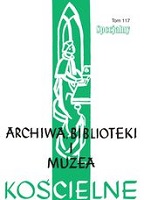
This article focuses on the photographs included in selected record groups in the Archives of the Polish Catholic Mission and discusses them in their historical context. The preserved material presents religious celebrations and patronal feasts of individual associations of the Polish diaspora. The paper also describes the photographs of religious buildings, those documenting support given to Poland when martial law was in force, and those found in the press organs of the Polish Catholic Mission: “Polak we Francji”, “Polska Wierna” and “Glos Katolicki”. The further part contains photographs in loose collections. The oldest ones relate to the events after 1919, when Poles arrived in France for economic reasons. After World War I, France needed workers, particularly in mines, and looked for them in numerous places, including Poland. The article also presents camp photographs, given to the Archives of the Polish Catholic Mission by Barbara Kujawska-Biernat, the daughter of the niece of Prelate Wiktor Miedziński, who worked as a Polish priest in Metz from 1945 to 1958.
More...
The Lublin Archdiocesan Archives store a collection of approximately 11,000 photographs from the 19th, 20th and 21st centuries. This collection still has to be put in order to respectfully all archival standards. It does not have a proper inventory yet. For internal purposes, only simple lists of photographs have been created. The collection is divided, according to the order of accession, into albums, chronicles, folders, envelopes and archival boxes. A significant part of the photographs finds its place in the personal and parish files. The photographs are digitalized to a very small extent. Their digital copies are prepared in an unsystematic way, mainly for the ad hoc purposes of current exhibitions and planned publications. Nevertheless, the photographic collection attracts increasing interest and is made available to public. The collection includes interesting objects, such as an extensive group of photos gathered for the purpose of beatification processes.
More...
The Archives of the John Paul II Institute contains the archival legacy of Rev. Professor Tadeusz Styczeń, Karol Wojtyła’s student and long-time director of the John Paul II Institute. The legacy material, apart from the textual documentation already arranged and described, includes numerous items in various forms of photographic image recording. Positive prints constitute the most numerous group, but negatives and image documentation digitally recorded are also held in the archives under study. The author discusses the state of arrangement of this collection from the point of view of archival methodology. He presents significant series and photographic themes, focusing on those which contain photographs connected with the activities of Karol Wojtyła (later Pope John Paul II) at the Catholic University of Lublin. He draws attention to those series of photographic documentation which show a unique relationship between the Pope and the author of the legacy, Rev. Tadeusz Styczeń. In conclusion, he defines the necessary successive stages of archival processing and emphasizes the need for quick arrangement, particularly the description of thematic series as well as the identification of events and people depicted in individual photographs.
More...
This article discusses the use of photographic documentation of the church archives of Biographical dictionary of priests from the Diocese of Sandomierz of the 19th-20th centuries. The lexicon was published in years 2014-2019. It contains 1901 biographical notes of the Sandomierz clergy. More than half of them were supplemented with photo reproductions presenting the images of individual priests. Most of them were found during searches in the Archives of the Diocese of Sandomierz and the Library of the Theological Seminary in Sandomierz. The author analyzes individual source documents that contained photographic objects. Additionally, the method of selecting illustrations and research perspectives were presented. The article may become a guide for authors who will create similar biographical dictionaries.
More...
The aim of this article is to present some of the photograph collections accumulated in the Archives of the Polish Province of the Congregation of the Mission in Cracow and the Archives of the Publishing Institute of the Congregation of the Mission „Nasza Przeszłość” in Cracow. Both institutions, apart from records, surveying-cartographic and technical materials, hold photographs. These include mainly single photographs documenting the life of members of the Congregation of the Mission and the history of its missionary outposts. There are also albums and boxes which contain theme-related photographs. In most cases it is not possible to identify their authors, except for the collection held in the „Nasza Przeszłość” Archives. It was accumulated by its founder, Professor Rev. Alfons Schletz CM, who for many years gathered various photographs, which he arranged into a number of different collections.
More...
Review of: Roman Majka, Archiwa i procesy archiwotwórcze wybranych zgromadzeń zakonnych założonych na ziemiach polskich w XIX i XX wieku, Wydawnictwo Michalineum, Marki 2019, ss. 366, tab. 23, il. 73
More...
Review of: Dzieje parafii Brzostek, red. Bogdan Stanaszek, Parafia Rzymsko-Katolicka pw. Podwyższenia Krzyża Świętego w Brzostku, Brzostek 2019, ss. 582, ISBN: 978-83-955108-0-9
More...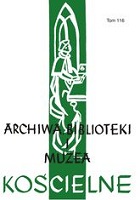
The article announces and discusses the first Polish edition of Cultura ingeniorum, the work of Antonio Possevino SJ, based on the contemporary translation of this text by Krystyna Remerowa, from the edition of the first book of Bibliotheca selecta, from the year 1604. It focuses on historical contexts, describes main threads, announces controversies related (inter alia) to understanding of monastic censorship as a regulator of written communication. At the turnout of the 16th and 17th centuries father Possevino was a participant of the historical events that turned the path of history, mostly the picture of the society of that time. He wanted to influence these changes by (among others) adequate (in his opinion) and recommended (by the Society of Jesus), particularly after the Trident Council, orientation of the youth, their education with carefully selected reading and physical exercises, development (paideia) of talents as far as possible, always for God’s glory. In this perspective, it can be interpreted in the perspective of media education paradigms. The article presents Possevino’s work as the one reflecting dilemmas of that time, resulting also from the orders of the controversial church and monastic authorities. This is the text of the spiritually mature author, convinced about doing right things, sometimes supporting counter reformation absolutely.
More...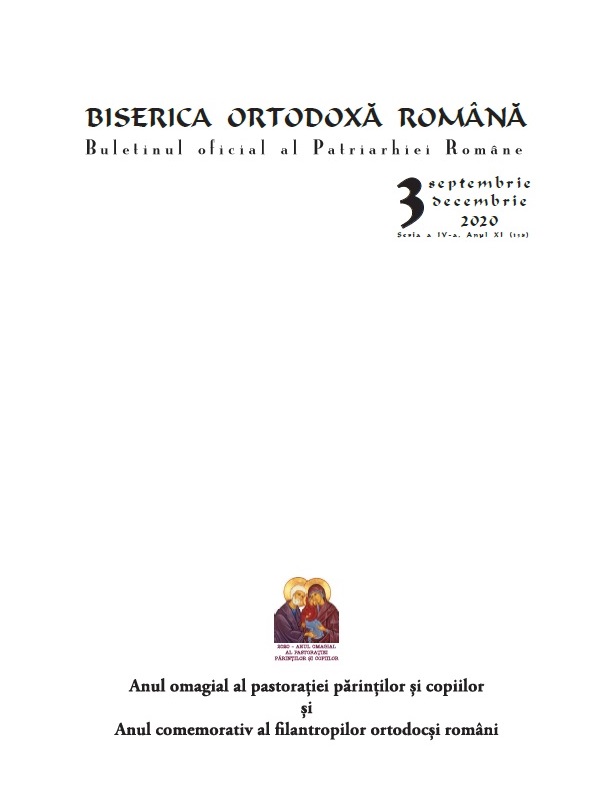
With God’s help, last weekend ROYA organized the Youth Congress. It was a blessing to have His Eminence Metropolitan Nicolae, His Grace Bishop Ioan Casian, and the new abbot of St. Demetrios the New Monastery in Middletown, NY, Father Ieremia with us. The Congress was preceded on Friday evening by an Akathist dedicated to Saint Catherine, the patron saint of our organization, which was attended by many young adults, together with Father Dean Mircea Panciuk from Edmonton, Canada. At the end of the Akathist, Father Mircea spoke to us about the importance of youth activity. Young adults at this point in their lives tend to have many things going on, and having Christ in their mind has an importance that cannot be put into words. The Congress officially opened on Saturday morning with a word of encouragement and greetings from the two hierarchs, after which roll call was done: 38 parish delegates, in addition to the other participants. A presentation of the organization led by Pompiliu Gîrlonța followed. Bogdan Manga then presented the events of the organization since the last Youth Congress, 2019. This was followed by a session in which delegates discussed changes to the organization’s Statute. The Board presented the overall changes, and then let the delegates ask questions and discuss the changes. A few things were added, such as that the majority of the Board members must be of Romanian heritage. Then, the new Statute was voted and passed with a majority vote. After a short break, the parish reports followed, at which the board briefly presented the first part. Here participants had the opportunity to speak from their experience, from their communities. The next day, Sunday, November 15th, the session started with the rest of the parish reports, followed by free discussions about what activities the delegates felt they had done best in their parishes with the participation of the parish priest. Next point on the Agenda was a presentation on the state of the entire organization. The Board described how the ideas proposed at last year’s Congress were implemented, and then described the “challenges” ROYA still faces: the distance between parishes, the lack of visibility and the restriction of activities due to the pandemic. Plans for next year were also discussed. After thanking the previous Board, His Eminence Nicolae and His Grace Ioan Casian congratulated the members of the new board and left them with this message: to establish relationships with young adults from all parishes of the Metropolia, so as to ensure the participation of at least one delegate from each parish at the ROYA Congress in 2022. Rareș Răducu, the former president, expressed his gratitude to the Board he had worked with for the last two years, and showed everyone the gift he will leave to our organization: a wonderful icon of Saint Catherine, painted in Romania by a young lady, with the ROYA logo in the background. After a short pause, Father Ieremia, from St. Demetrios the New Monastery, began his conference, with the theme “He who is holy, let him be holy still.” A true mission cannot be sustained without a permanent inner fire. Related to this, he urged ROYA members to pray for one another daily, because when two people maintain a spiritual relationship through mutual prayer, God is almost automatically softened toward them. This prayer can best be worked on when we carry others in our hearts during the Divine Liturgy, so he urged participants to attend as many Liturgies as possible and to approach the Holy Sacraments often, especially in these troubled times. Father ended his conference with two encouraging messages: the first from Archimandrite Melchisedec, abbot of the Putna Monastery, to perceive not the outward appearances, but the heart of every man; and the second from the Epistle of St. Paul to the Ephesians, to cultivate a spirit of peace and love for one another.
More...
This text explores the subject of minimalist renovations in the sacred interiors of the Roman Catholic Church, based on a selection of representative examples, geographically and culturally diversified. Starting from the assumptions of the Second Vatican Council and the artistic and socio-cultural changes that could be observed as early as the 19th century, the article analyses the factors that led to an extreme formal reduction in church decoration. Apart from the obvious issue of interior architecture, a reflection is undertaken on the way in which art, which is both a cult and an aesthetic element, is displayed. Legal factors, liturgical and psychological aspects are also taken into account. To analyse the problem, realisations and projects from the circle of European architecture have been used.
More...
The basic sources in the research on monastic libraries, apart from library catalogues, include visitation files, recording the numerical size of communities and the size of monastic book collections. The visiting inspectors recorded the number of volumes, contents, library rooms and the archival documentation of individual monastic institutions. The preserved visitations to Basilian monasteries allow for the analysis of 27 book collections in the Uniate Diocese of Lutsk during the first quarter of the 19th century. This documentation makes it possible to determine the number of collections, the pace of their increase, and their thematic scope. Several years later, after the dissolution of the Basilian Fathers, most of these libraries would be dispersed, a large part of the books donated to educational institutions, while more valuable items were transferred to museums and university libraries. Visitation files are therefore a valuable source for exploring the collections, the places where they were stored, as well as the contents of the monastic archives. Monastic libraries varied in size, organization, and substantive content. They served primarily as support in the pastoral and educational work of monks. Both theological works and fiction works, as well as Western European manuscripts and editions were collected in the monasteries. The range of Polish and foreign typographies testified to the high intellectual culture of the order. Even small communities scattered in rural centres offered the opportunity of contact with books and educating local youth. Undoubtedly, they formed the cultural landscape of these lands.
More...
The presented article provides a list of the printed editions of the Bible in Polish which came out over the years 1801-1945. In order to identify specific editions, the literature (as well as available databases) on the topic in question was reviewed. The catalogues of the main Polish antique shops, as well as au-ction and advertising portals were also examined. As a result of these efforts, data was collected on a total of 242 editions of the Bible (Old Testament and New Testament) during the analysed period. 71 out of 242 editions were considered unique or exemplary.
More...
Review of: Joanna Nastalska-Wiśnicka, Biblioteka Uniwersytecka Katolickiego Uniwersytetu Lubelskiego Jana Pawła II. Kronika stulecia 1918-2018, Lublin 2020, ss. 542, ISBN : 978-8380-618-169
More...
Review of: Głosy z „Ostatniego kręgu”. Korespondencja z Konzentrationslager Auschwitz Józefa Kreta i Zofii Hoszowskiej-Kretowej, oprac. Krystyna Heska-Kwaśniewicz, Lucyna Sadzikowska, Katowice 2020, ss. 203, ISBN 978-83-66055-16-2
More...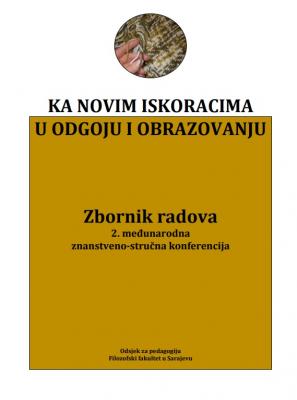
Multicultural societies created by the process of globalization, how rich are so challenging, especially for the educational system that, due to social changes, has faced a great challenge, called religious education. In classrooms where a large number of students from Austria, with their mother’s native tongue and Roman Catholic faith sat on the same day, this picture drastically changed. The look into the classrooms is like a look at the keleidoscope, saren and diverse, both in the cultural and in the religious field. Teaching staff of all spheres of study, but also students, meet new challenges in their work. The topic of upbringing is everywhere. Schools, as an educational unit, attach great responsibility to the field of education and education of future generations. Religious education in many ways contributes to solving challenges and strengthening the identity of young people. Especially in issues affecting the educational character, the importance of the education of the person, the strengthening of the individual’s identity, education in the field of spiritual and moral development, religious education carries great responsibility. In the vortex of challenges, Islamic religious pedagogy has come to a halt in the face of experiencing how to continue working in schools, what to offer students and how to prepare them for life in a multireligious society. At the Catholic University of Graz, at the Institute for Catechism and Religious Education, the Project “Integration through Inter-Religious Education” is located, which aims to contribute to the strengthening of the quality of Islamic religious education in schools. Through the research carried out within the project, it was pointed out that both on the good sides and in the shortcomings, offering solutions in the field of training of religious pedagogues and strengthening of quality, both Islamic and Roman Catholic religious education.
More...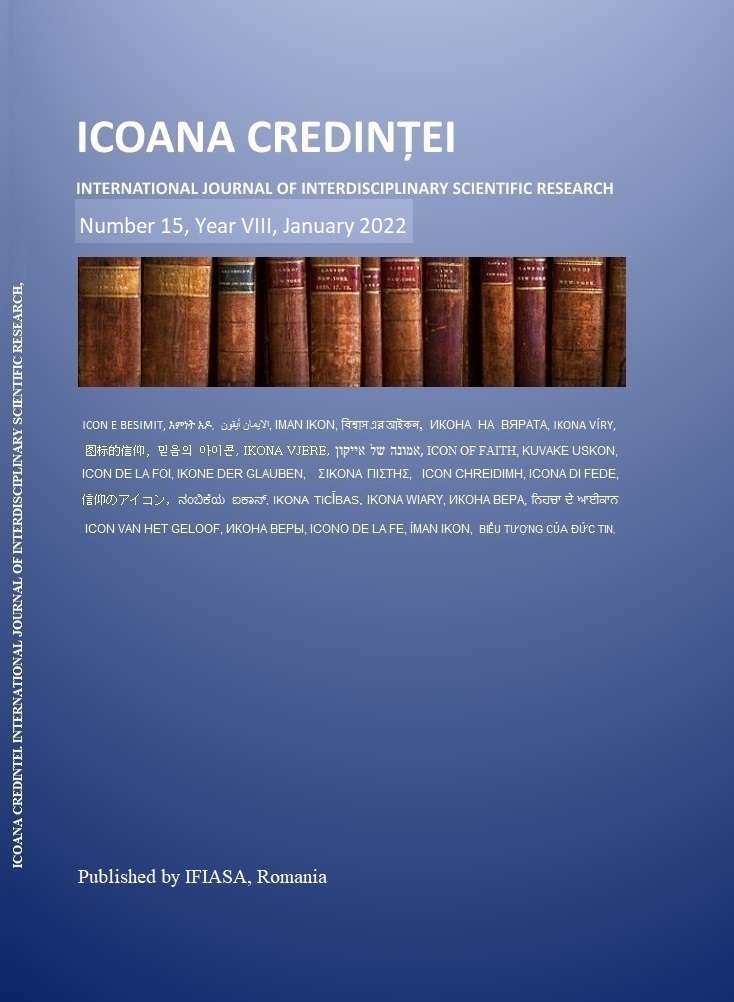
The confrontation between good and evil, in the 20th century, had frightening proportions. Through a twisted logic, ideologically and “scientifically” reasoned,there have been destroyed spiritually, morally, socially and economically the destinies of many people, ethnicities and countries. For some people the psychical and physical salvation from the terror of the materialistic-atheist utopia was assuming a spiritual life
More...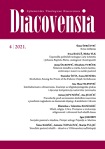
Review of: Hrvoje RELJA: "Tomistička filozofija"– Leykam international, Zagreb, 2021., 436 p. Reviewed by: Ivan Macut.
More...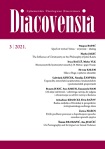
Rhetorical skills are important for preachers because the word of God is spread by speech. From the beginning of Christianity and Saint Augustine, it has been emphasized that eloquence can help preachers reach the faithful. The paper analyses and compares sermons of the two largest Christian faiths: Roman-Catholic and Protestant, to determine whether there are significant rhetorical differences between their preachers. Descriptive rhetorical analysis of sermons was conducted, which included the structure, style (choice of words and figures), and speech delivery (use of nonverbal and prosodic signs during sermons). The analysis showed that there are certain rhetorical differences between preachers, but they are conditioned more by the rhetorical skills of an individual preacher than religious affiliation.
More...